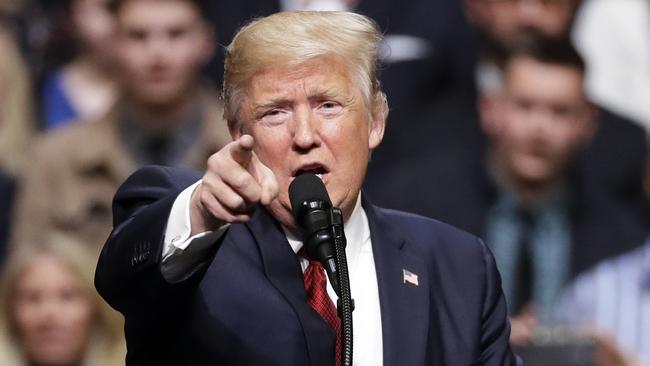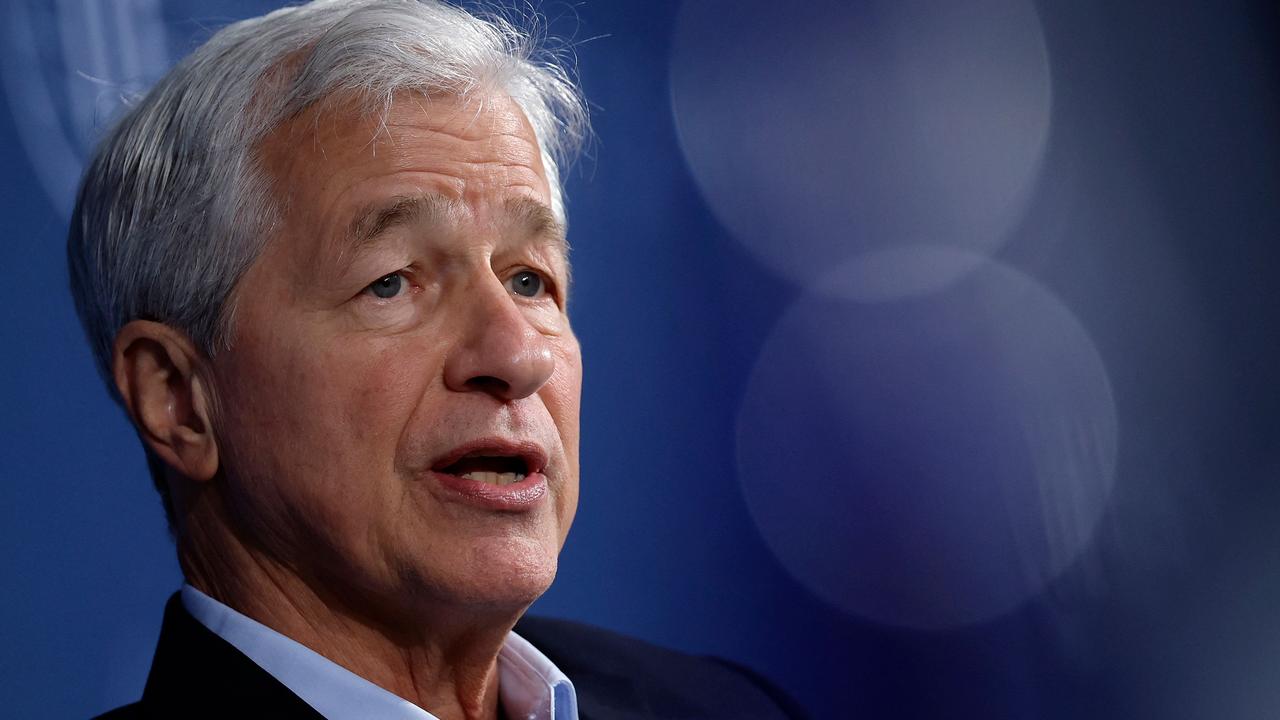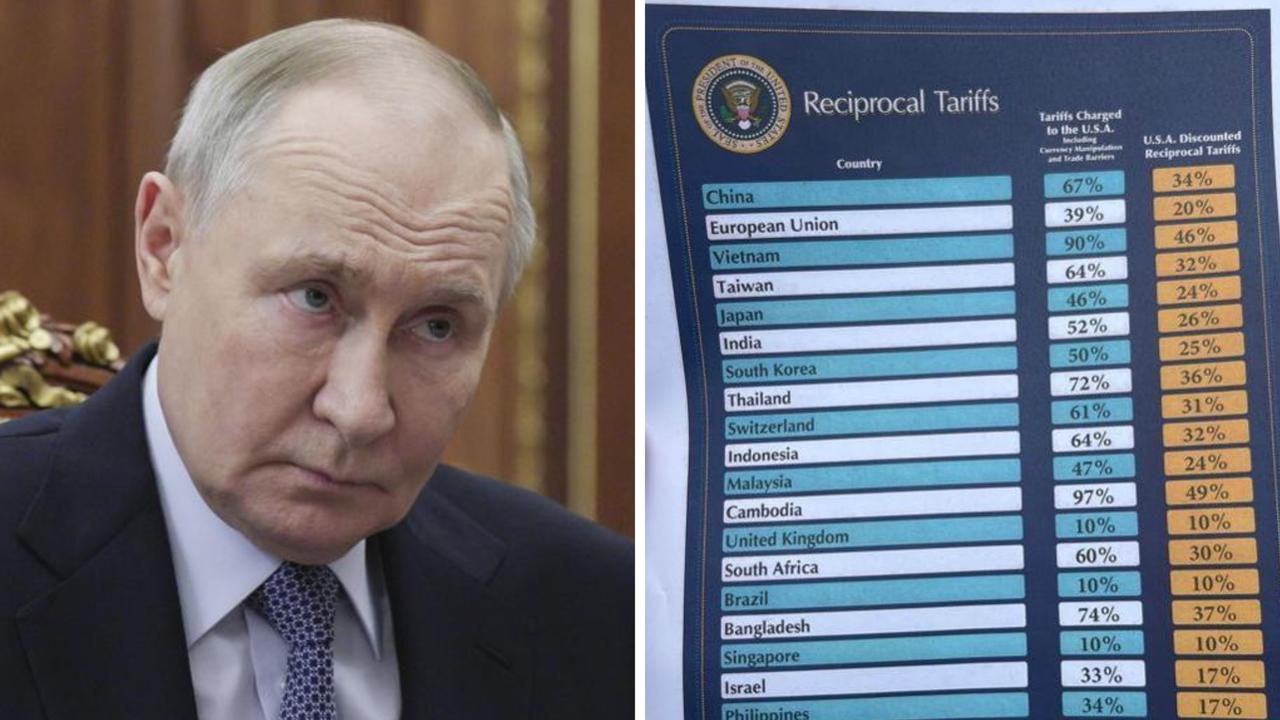Winners and losers in Trump’s budget blueprint
OF THE 15 areas listed in Donald Trump’s “America First” budget blueprint, only a sliver are seeing any increases — but the increases are generous.

OF THE 15 Cabinet agencies listed in President Donald Trump’s “America First” budget blueprint, only a sliver are seeing any increases over their 2017 levels — but the increases are generous.
Three agencies — Defence, Veterans Affairs and Homeland Security — account for the entirety of the budget hikes, amounting to a whopping $59.5 billion.
The other 12 agencies, meanwhile, face cuts worth about $57.3 billion, combined. Here’s a breakdown of all the “winners” and “losers” in Trump’s inaugural budget outline:
WINNERS
Defence
Increase: $52.3 billion, 10 per cent
The $639 billion defence proposal should go over well with the likes of Senator John McCain, who notably advocated for a $640 billion budget. The huge increase restores $52 billion to the Department of Defence and $2 billion more to other defence programs “in a repeal of defence sequestration.” Cyber security is significantly highlighted as a key area to improve as the US builds a “more lethal joint force”. The budget also funds efforts “to strike ISIS targets, support our partners … disrupt ISIS’s external operations, and cut off its financing.” The defence windfall also addresses warfighting readiness and shortfalls in munitions, personnel and maintenance.
Veterans Affairs
Increase: $4.4 billion, 5.9 per cent
Representing a key area where then-presidential candidate Trump promised investment, the budget increases discretionary funding for Veterans Affairs health care by $4.6 billion while also investing in IT advancements to improve efficiency. It also provides monetary support for VA programs that serve homeless and at-risk veterans.
Homeland Security
Increase: $2.8 billion, 6.8 per cent
This portion of the budget is almost all about Trump’s “big, beautiful wall” on the Mexican border and other border enforcement priorities. It gives $2.6 billion for “high-priority infrastructure and border security technology” including funding to construct a “physical” border wall. The budget supplies $314 million to recruit, hire and train 500 new Border Patrol Agents and 1,000 new Immigration and Customs Enforcement personnel and support staff. About $1.5 billion is provided for expanded detention and removal of illegal immigrants, while $15 million is set to go to mandatory nationwide implementation of the E-Verify system. Cuts include $667 million in Federal Emergency Management Agency programs that weren’t authorised by Congress and underperforming Transportation Security Administration programs.
LOSERS
Health and Human Services
Decrease: $15.1 billion, 17.9 per cent
Most of the cuts come from two areas — the National Institute of Health and the Office of Community Services. Eliminating discretionary spending for OCS saves $4.2 billion while NIH spending reduction checks in at $5.8 billion. A major reorganisation of NIH, including an elimination of various programs and activities, is also on tap. A Federal Emergency Response Fund is created to quickly respond to health outbreaks, with the Zika virus specifically cited.
State
Decrease: $10.9 billion, 28.7 per cent
The budget eliminates the Global Climate Change Initiative and ceases payments to United Nations climate change programs. Funding for the UN and affiliated agencies is also reduced overall, as is foreign aid. The State Department’s Educational and Cultural Exchange Programs get cuts, as do multilateral development banks, “including the World Bank”. But the budget isn’t all cuts. Citing the Benghazi Accountability Review Board, money is provided to maintain “robust funding levels for embassy security,” and $3.1 billion is provided for security assistance to Israel. Economic development assistance programs are reoriented “to countries of greatest strategic importance to the US” and resources are provided to fulfil a $1 billion vaccine pledge.
Education
Decrease: $9.2 billion, 13.5 per cent
The budget eliminates numerous grants and programs, while safeguarding the Pell Grant program. Federal Work-Study is reduced and also reorganized to better be allocated to those undergraduate students most in need. More than 20 categorical programs “that do not address national needs” are reduced or eliminated.
Housing and Urban Development
Decrease: $6.2 billion, 13.2 per cent
HUD’s rental assistance program is reformed and funding is eliminated for lower priority programs and Section 4 Capacity Building for Community Development and Affordable Housing. Cutting the Home Investment Partnerships Program saves $1.1 billion and wiping out the Community Development Block Grant program saves $3 billion.
Agriculture
Decrease: $4.7 billion, 20.7 per cent
Numerous loan and grant programs are eliminated, staffing at USDA Service Center Agencies is reduced and funding for USDA statistical capabilities is cut. Rural Business and Cooperative Service discretionary activities are eliminated and major new Federal land acquisitions for the National Forest System get the axe.
Labor
Decrease: $2.5 billion, 20.7 per cent
The budget reduces funding for ineffective or duplicative job training grants and focuses Bureau of International Labor Affairs on ensuring that “US trade agreements are fair for American workers.”
Transportation
Decrease: $2.4 billion, 12.7 per cent
A proposal to shift air traffic control from the FAA to a non-governmental organisation is initiated while federal funding is capped on the Federal Transit Administration’s Capital Investment Program. Several grants are eliminated.
Energy
Decrease: $1.7 billion, 5.6 per cent
A trio of energy research programs are cut in favour of private sector research. The Weatherization and Assistance Program and the State Energy Program are eliminated in attempts to reduce Federal intervention in State-level issues.
Commerce
Decrease: $1.5 billion, 15.7 per cent
The budget consolidates aspects of the Economics and Statistics Administration within other statistics agencies. It eliminates two agencies: the Economic Development Administration and the Minority Business Development Agency. There are also $250 million in cuts to National Oceanic and Atmospheric Administration grants.
Interior
Decrease: $1.5 billion, 11.7 per cent
Programs such as discretionary Abandoned Mine Land grants are discontinued because they overlap with existing programs. Funding for major acquisitions of Federal land is reduced. Better budgeting is put in place for wild land fire suppression. About $1 billion is invested in “safe, reliable and efficient management of water resources”.
Justice
Decrease: $1.1 billion, 3.8 per cent
Despite the bottom-line getting cut overall, there are plenty of increases at Justice, including in counterterrorism and counterintelligence activities. Funds are also provided to target the “worst of the worst criminal organisations and drug traffickers”. To combat illegal immigration, the budget provides for the hiring of 75 additional immigration judges, 60 additional border enforcement prosecutors, 40 deputy U.S. Marshals and 40 attorneys. Bankruptcy filing fees are increased in an effort to produce an additional $150 million.
Treasury
Decrease: $519 million, 4.1 per cent
The budget eliminates grants, shrinks the Federal workforce and “empowers the Treasury Secretary … to end taxpayer bailouts”.
OTHER AGENCIES
Environmental Protection Agency
Decrease: $2.6 billion, 31 per cent
While not technically a full-blown Cabinet department, the EPA also is slated for major cuts, including the elimination of over 3,000 positions.
This story originally appeared on Fox News and was republished with permission.



